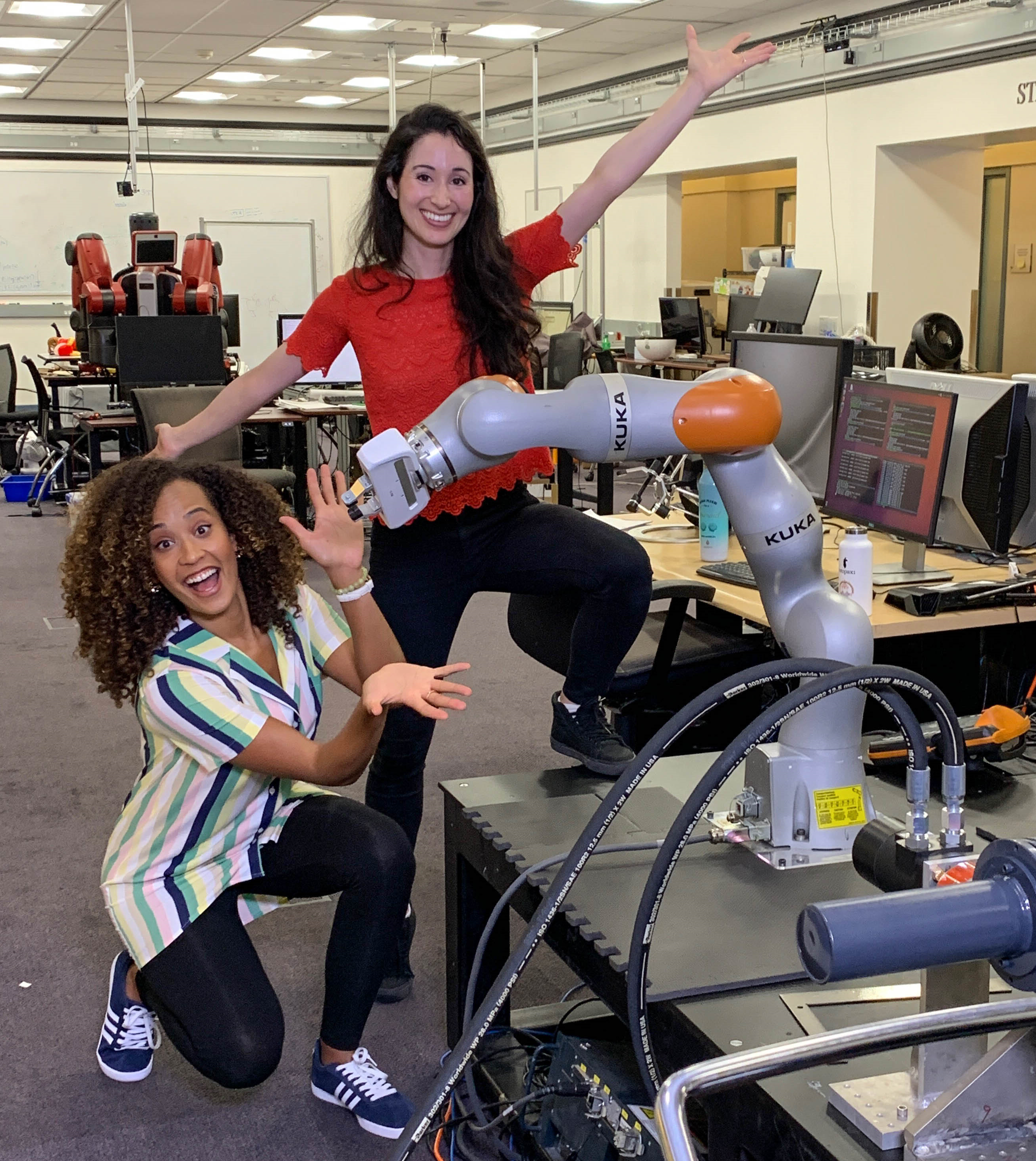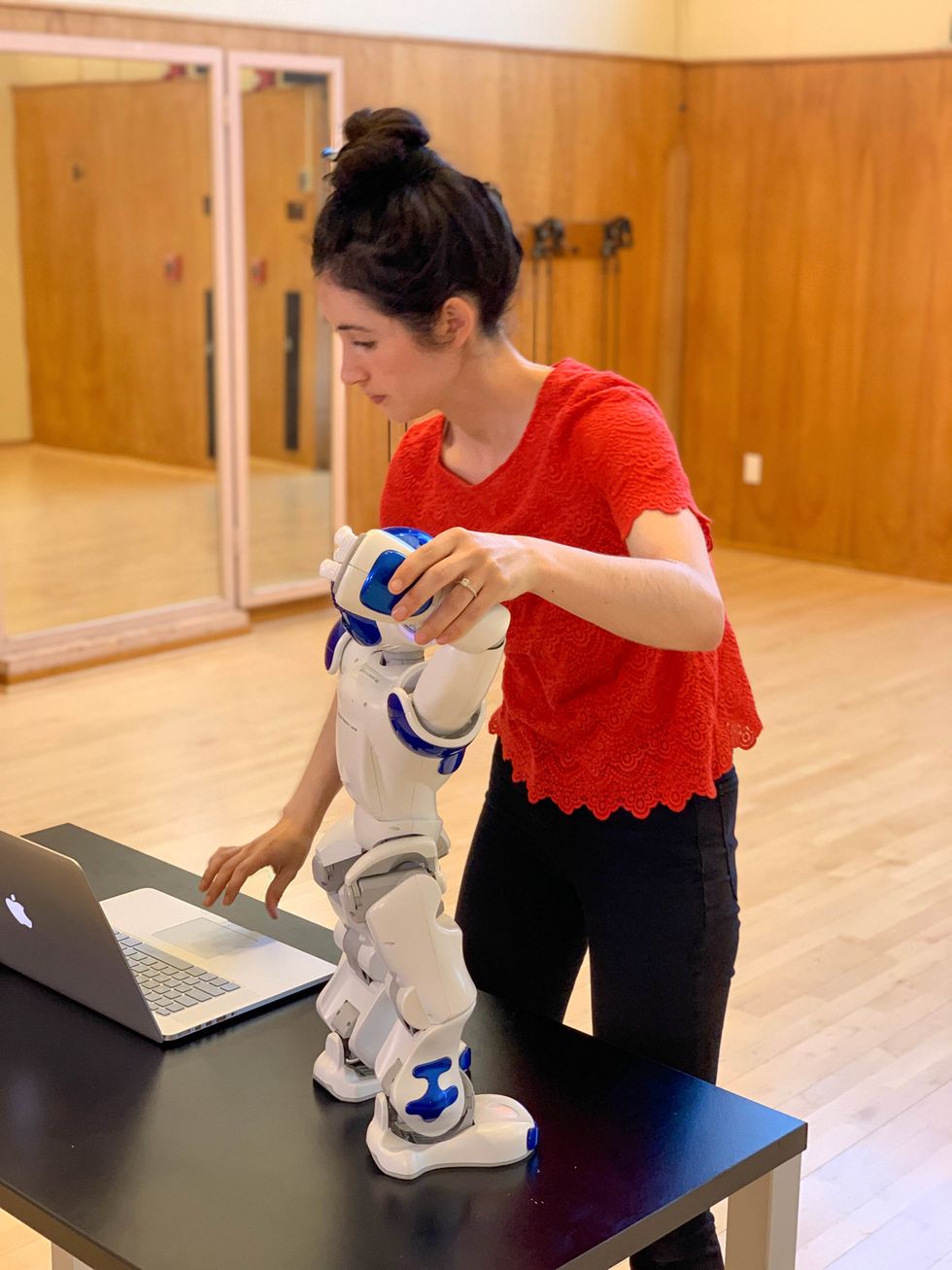Why Robots Need Choreographers
Robots often get a bad rap. “There’s an impression that they’re much more capable than they really are,” says Catie Cuan. Whether it’s a fear that “robots are coming for my job” or “robots are coming to kill me,” Cuan believes those ideas are largely driven by how robots are portrayed in fiction and storytelling.
Cuan is actively working to change how the public perceives robots. But what does that have to do with dance?
Both dance and robotics are interested in how bodies—human or machine—move through space, and Cuan, a PhD candidate in mechanical engineering at Stanford University, is a robot choreographer.
What Exactly Is a Robot Choreographer?
Cuan’s research investigates how robots and people make contact with each other. “People move around with robots and touch robots and contact one another through robots, and I think that’s something that dancers understand very well,” she says, mentioning practices like contact improvisation and ballroom dancing.
“I have a set of tools and ethics and practices and skills that I bring to the table, which is ingrained through years of dance training. I can bring those to the application of design, interaction and control mechanisms for robots. And so it doesn’t make me only a roboticist; it means that I’m a robot choreographer because I have this lens.”
Taking Robots Beyond the Lab
Though “robot choreographer” may seem like a foreign concept, Cuan believes it is a growing role. “I think places like Stanford are figuring out what to do with people like me.” (After majoring in business and minoring in dance in undergrad, Cuan worked in management consulting in New York City before she decided to pursue performance and choreography full-time. Six years later, she started her master’s in mechanical engineering and then her PhD.)
Still, she recognizes that the performative aspect of robotics isn’t new. “Roboticists do demos for other roboticists. They go to conferences and they bring what they’re working on—and that’s a show! And if I want to show the robots that I’m working on in a theater or my experiments in a museum, is that as worthy? I would argue that it is.”
Cuan points to other artist-scientists who are already paving the way—people like Sydney Skybetter, who founded the Conference for Research on Choreographic Interfaces; Google’s Lauren Bedal, a choreographic interface designer; Madeline Gannon, who’s established the MADLAB.CC research studio in Pittsburgh; and the University of Aalborg’s Elizabeth Jochum, who’s studied how human-robot interaction can be improved by taking a page from large-scale puppet designers.
Her Major Motivator
Though Cuan has been motivated by many artist-scientists throughout her journey, she says that her dad, a Cuban immigrant in his mid-70s, is her main inspiration. “There’s this next frontier that the field talks about: robots that are no longer heavy, stiff, in the factories, but robots that are meant to be around people. He’s the user case that I always think about. I would love for my dad to stay in his house as long as he can and to be independent and empowered. And I feel like robots that are easy for people to understand and use could be so critical.”
As a robot choreographer, she can help design movement that’s less threatening and seems more human. “There are a number of studies that demonstrate that how something moves is even more important than how it looks,” she says. “With someone like my dad, you don’t get many chances. He’ll figure it out and use it, or he’ll be frustrated and impatient.”

Courtesy Litton Entertainment and The IF/THEN Collection
Dance and Science Aren’t an Either/Or
Looking back, Cuan says she’s had a lifelong love of math and science, but it didn’t come without teasing. “I can point to these four or five really awful moments in middle school where someone made fun of me for doing well,” she says. “And it seemed like, ‘Gosh, this field is not for me’ or ‘I can’t be myself as a girl, as a dancer, as an outgoing individual. I can’t do that and do STEM.”
“That’s a huge tragedy,” she continues. “Girls should feel like they can go to ballet class from 4 to 7 pm and do their math homework from 7 to 8—that those two things are not in conflict.” As an IF/THEN ambassador for the American Association for the Advancement of Science, Cuan is encouraging the next generation of women in STEM. “IF/THEN recognizes that in order for young women and girls to pursue or at least feel like STEM is for them, we need a culture shift. It’s this idea of ‘If she sees it, then she can be it.’ ”

Courtesy Litton Entertainment and The IF/THEN Collection
Whether she’s working in a lab or mentoring young women, Cuan is confident that dance has a place in robotics. “Artists have an incredible amount of power when it comes to determining narratives about robots. If we have a total dearth of narratives about robots that are beautiful, robots that are friendly, that are interesting and compelling, then that’s a very narrow lens.”
“Artists have a huge opportunity to provide diversified and novel viewpoints when it comes to what robots can and should be. And those viewpoints are impactful—because not everyone in the world has seen a robot before.”



